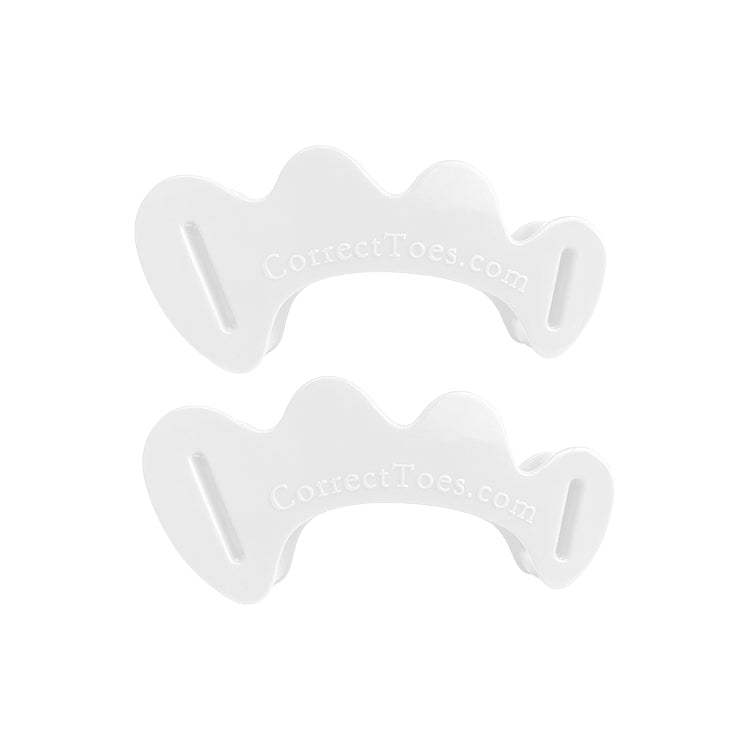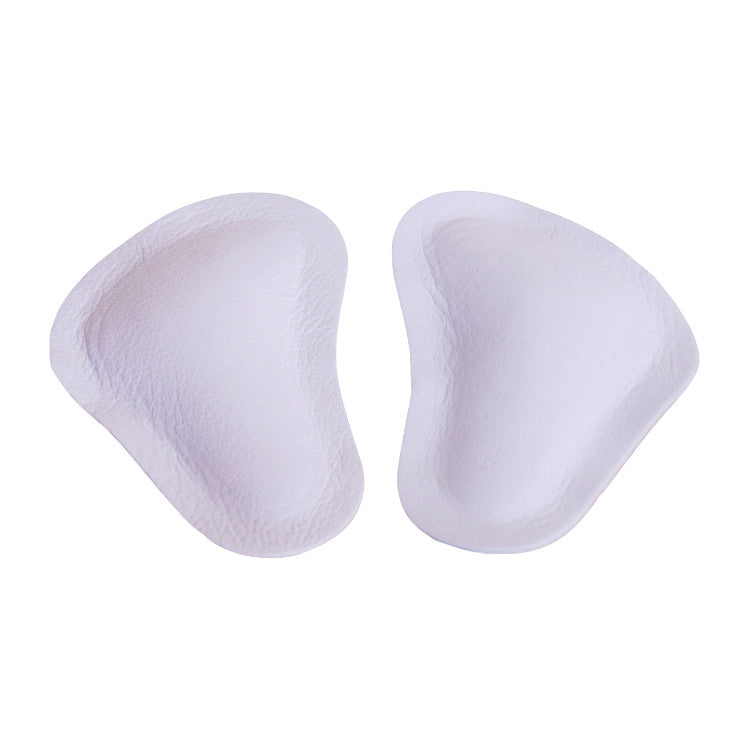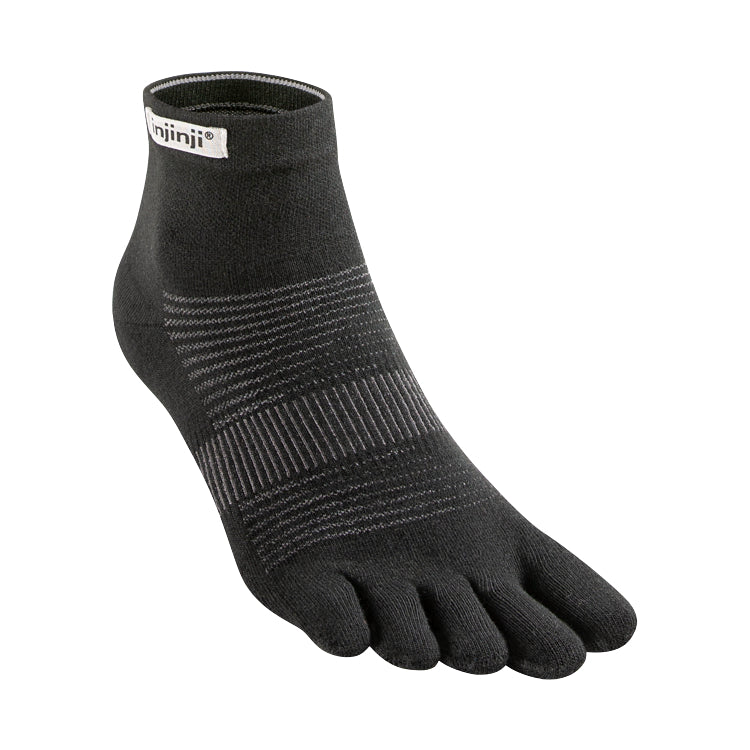
Propping up the foot arch is a common approach used by physicians to help treat certain foot and ankle disorders. Arch support is also a design feature commonly touted by shoe manufacturers as beneficial. But we thought it would be helpful to discuss what arch support really means and whether it’s truly necessary—or even desired—in the foot.
Arch Support Definition
To understand our arch support philosophy, it’s important to understand the architectural principle of an arch. Webster’s Dictionary defines an arch as “A curved structure that supports the weight of material over an open space.” Put another way, an arch is any curved structure that is able to bear weight over an open space by providing support on either end of that open space. An arch becomes stronger when increasingly large forces are placed upon it, as the increased weight causes the arch’s components to “mesh” more effectively. If you examine the structure of the foot and the shape of the bones that make up the foot, you quickly realize that most of the weight-bearing bones in the foot are themselves shaped like arches.
The True Nature of “Arch Support”
Applying Webster’s Dictionary’s definition of an arch to the arches of the foot (including the medial longitudinal arch, or the arch that runs from the rear-foot, or heel bone, to the forefoot, or ball of the foot, and toes), we reason that such arches should be supported on either end of the foot and not in the middle of the arch, as it’s widely believed. Unfortunately, the type of support available to most consumers, whether it be over-the-counter (e.g., Dr. Scholl’s or other similar products) or via healthcare professionals (e.g., footbeds, arch supports, or orthotics), is the exact opposite of the type of “arch support” most people actually need. These products attempt to support or prop up the span of the arch, but they do not support the ends of the arch (i.e., the heel and the joints of the forefoot).
Conventional Arch Orthotics: A Band-Aid Solution
It’s true that many people who use conventional arch orthotics report a positive influence on their posture and an increase in comfort while walking, but this isn’t because they have a foot problem that’s corrected or cured by arch support. Instead it’s because nearly all footwear available to consumers today expects the wearer to function optimally while walking on a downhill ramp (an outcome of heel elevation, one of the most popular design features built into conventional footwear). In other words, the “arch support” prescribed for and used by the masses serves only as a Band-Aid solution that allows a person to continue wearing the sort of footwear that led to his or her foot problem in the first place.
The Arch-Destabilizing Effects of Conventional Footwear
Conventional footwear strips the principle foot arch of its inherent strength and stability by elevating the heel (one end of the foot arch) and pinching the toes together and positioning them above the ball of the foot at the other end of the arch (through tapering toe boxes and toe-spring, respectively). This unnatural foot and toe configuration destabilizes the medial longitudinal arch and leads to excessive pronation—a common cause of many foot ailments. Conventional arch orthotics are used, in part, to help prevent this overpronation, but it fails to address the underlying cause of the problem. Also, conventional arch support, by propping up the open space of the main foot arch, only serves to weaken the muscles that span this open space, which include the many layers of muscles within the foot and muscles in the lower leg that send tendons to their final insertion points on the toes.
Enabling Natural Arch Support
True, natural arch support involves positioning both ends of the foot arch—the calcaneus bone, or heel bone, and the forefoot, including the toes—level with each other and flat on the ground and restoring proper toe alignment, especially big toe alignment (using Correct Toes). The medial longitudinal arch is inherently strong and capable of supporting the body’s weight. In fact, the more weight the foot arch bears, the stronger it becomes.

WANT TO IMPROVE YOUR FOOT HEALTH?
Let the team at Natural Footgear help you! Subscribe to our newsletter for the latest offers and helpful info, and sign up for our FREE email courses on various topics and foot health conditions.
Sign Up →
Want to Improve Your Foot Health?
We are here to help you every step of the way. Get our newsletter for the latest offers and helpful info, and sign up for our FREE email courses on various topics and conditions, including bunions, hammertoes, neuromas, plantar fasciosis, shin splints, ingrown toenails, and more.
Sign Up →
 The idea that the foot’s main arch—the medial longitudinal (ML) arch—needs to be propped up and supported is a long-held belief in the foot care world and the footwear industry. In fact, propping up the ML arch with conventional arch orthotics is a common approach used by physicians to help treat certain foot and ankle disorders and “resolve” inherent foot flaws. Arch support is also a common design element included...
Read more
The idea that the foot’s main arch—the medial longitudinal (ML) arch—needs to be propped up and supported is a long-held belief in the foot care world and the footwear industry. In fact, propping up the ML arch with conventional arch orthotics is a common approach used by physicians to help treat certain foot and ankle disorders and “resolve” inherent foot flaws. Arch support is also a common design element included...
Read more












Your comments about foot issues are the most rational and refreshing that I have read in years. I suffer from plantar fasciitis and look forward to wearing the shoes I have just ordered. I’ve always felt that the orthotics I’d been prescribed are unnatural, and they really haven’t helped remedy my situation.
Hi, Lora,
Thank you for your comment. And thank you for your kind words! Much obliged!
We hope the new shoes work out well for you. We’d recommend checking out the following article if you’re transitioning to minimalist shoes for the first time. It offers some very helpful insights that can lead to a smoother transition:
www.naturalfootgear.com/blogs/education/17888528-how-to-transition-to-minimalist-shoes
If you have any questions moving forward, please don’t hesitate to reach out. We’re happy to help out however we can!
Kind Regards,
Andrew Potter
I hear all the time that zero drop shoes are bad for flat feet because we walk on concrete all (or at least most of) the time instead of natural, uneven surfaces like forest trails, thus shoes with a slight heel raise are better. Does this have any truth? I would also like to know if running on concrete in minimalist shoes is worse for the knees than running in regular shoes with more cushioning. Greetings from Hungary!
Thank you for your comment, Balla! We prefer zero drop footwear for flat feet because the completely flat sole serves to help stabilize the main foot arch (regardless of its height) and strengthen the foot when weight-bearing. Any degree of heel elevation built into a shoe only serves to destabilize the main foot arch and is detrimental to the overall health and function of the foot.
Also, shoes that have a relatively thin and flexible sole (i.e., more minimalist type shoes) offer better ground-feel, which allows users to be more aware of and conscientious about their footfalls and the resulting impact on the foot and other lower extremity joints. So, regardless of whether you’re running on concrete or other, softer surfaces, minimalist shoes encourage the kind of impact moderating behavior that can spare your joints the greater loads and forces they experience when you wear more cushioned athletic shoes on these same surfaces.
Here are a couple of relevant resources from our site that I think you might find interesting:
The Shoe Cushioning Myth:
www.naturalfootgear.com/blogs/education/34226629-the-shoe-cushioning-myth
Footwear & Knee Osteoarthritis:
www.naturalfootgear.com/blogs/education/17883016-footwear-knee-osteoarthritis
Please do let us know if you have any additional questions!
Kind regards,
Marty Hughes, DC
I’d like to know if you are located in Los Angeles, California?
Hi, Ana Cristina,
Thank you for your question. We’re an online-only store, and so therefore we do not have any physical locations throughout the US, including in Los Angeles. We are, however, happy to ship any of the items we offer in our store directly to your doorstep!
Please do let us know if you have any additional questions.
Kind regards,
Marty Hughes, DC
Hi. Is a zero drop shoe with arch support unhealthy for the foot?
Hi, Julie,
That’s a really great question. The two things that enable healthy foot arches are the following:
1. Sufficient toe splay
2. A level surface for the foot to rest and act upon
For most folks, if these two conditions are met, conventional “arch support” is usually not required—it’s not only redundant, but it also impedes natural foot movement. So, in most cases, arch support in zero drop shoes is usually counterproductive.
I hope this info helps!
Kind regards,
Marty Hughes, DC
I am from India. After using the wrong shoe, combined with a sedentary lifestyle, my left foot arch started collapsing. I used arch supports as prescribed by doctors. They are not helpful for many reasons: 1) They weaken the muscles; 2) They raise my foot so much that my great toe loses contact with the ground; and 3) They act to correct in the sagittal plane (i.e., move the arch up). But in the frontal plane, there is still movement of the talus and navicular drop towards the medial side of the foot. Now I have calcaneal eversion, navicular drop, loss of my medial arch, and first ray instability. Please kindly help me with how to correct these problems using Correct Toes, metatarsal pads, etc.
Hi, Arun,
Thank you for your comment. I’m sorry to hear about the foot situation you find yourself in! What you’re describing is a pretty common complex of signs and symptoms, and the good news is that, with the proper care and attention, you should be able to restore the strength and function of your feet. I recommend diving into this article on our site, which lists the top tools and techniques for achieving sound foot health:
www.naturalfootgear.com/blogs/educational-articles/10-best-natural-foot-health-tools-tips
I think you’ll find the approaches discussed here to be quite helpful in addressing the challenges you described above. Of course, if you have any additional questions about the concepts, footgear, or approach, please do let us know!
All the best,
Robyn Hughes, ND
I understand that the footgear you feature and the approach you talk about is designed to improve foot shape and performance, but how does it impact posture in a positive way?
Hi, Daniel. Many thanks for your excellent question. The footgear we feature on our site supports natural foot function by promoting proper alignment and encouraging the foot’s muscles and structures to work as they were intended. When your feet are properly aligned, it helps improve the positioning of the rest of your body, including your ankles, knees, hips, and spine. This alignment can lead to better overall posture, as it reduces compensations and strain that can occur from improper foot mechanics.
Most conventional shoes, with their heel elevation, toe spring, tapering toe boxes, and rigid, inflexible soles, distort natural foot shape and function over time. This often leads to poor foot mechanics, which then affects the alignment of upstream joints. By wearing footgear that allows your feet to function as they should—such as footwear that’s flat, flexible, and wide enough to accommodate the natural spread of your toes—you help restore proper foot alignment. This, in turn, promotes better alignment throughout your entire body. For example, when your feet are in their natural position, your ankles are less likely to overpronate, which helps prevent misalignments in your knees, hips, and lower back.
As your body becomes better aligned from the ground up, it reduces stress and tension on your joints and their supporting ligaments and tendons, allowing for more efficient movement and improved standing posture. Over time, this can—for many—lead to enhanced balance, reduced pain, and greater overall comfort. In essence, the right footwear and other complementary footgear support your feet in a way that benefits your posture by helping to maintain proper alignment and balance throughout your entire body. Restoring natural foot form and function, then, is an important part of achieving better posture and long-term musculoskeletal well-being.
We hope you find this answer helpful, Daniel! Please let us know if you have any follow-up questions or queries.
Yours in Foot Health,
Drs. Marty & Robyn Hughes